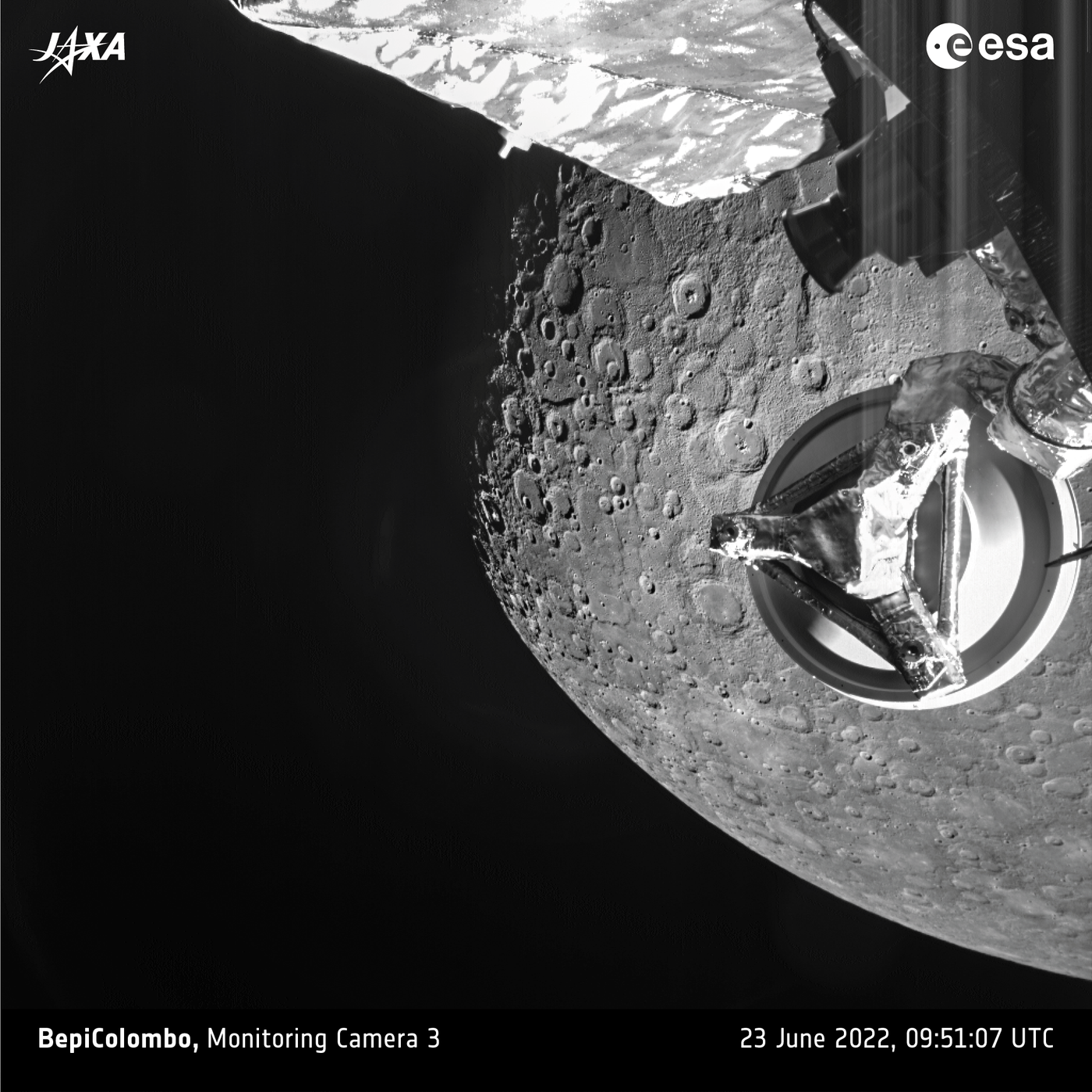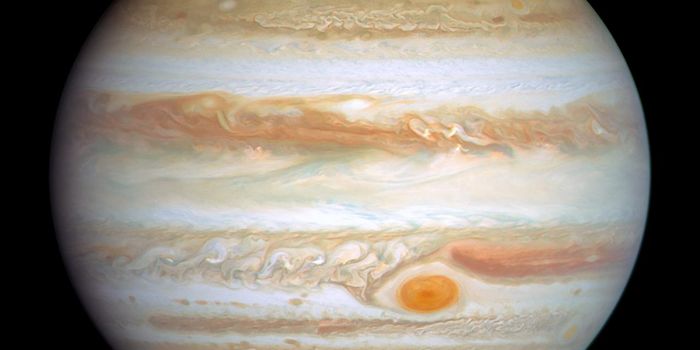BepiColombo Snaps Photos of Mercury
On June, 23, 2022, the BepiColombo mission made its second gravity assist of the planet Mercury. BepiColombo is a collaboration between the European Space Agency (ESA) and the Japan Aerospace Exploration Agency (JAXA). As the spacecraft approached Mercury, it came within 200 kilometers (approximately 124 miles) of the planet’s surface and captured new images.
This was the second of six Mercury flybys the spacecraft will make before settling into orbit around Mercury in 2025. Images were obtained by three monitoring cameras (MCAM) on the spacecraft. Scientific data from a number of instruments was also collected. The spacecraft flew from the nightside to the dayside of the planet. It made its closest approach along the nightside, and then saw the Sun appear over the cratered planet surface, where the Sun cast shadows that highlighted the extreme topography of the terrain.
The images captured views of various important geologic features including the Heaney Crater and the Caloris Basin. The Heaney Crater is a 125 kilometer (approximately 78 mile) wide crater that is covered in smooth volcanic plains, which is a rare example of a candidate volcano on the planet. The Caloris Basin is the largest impact feature on the planet at 1,550 kilometers (approximately 960 miles) wide. This basin is filled with volcanic lava that is thought to post-date the basin itself by over a hundred million years. These are two examples of important targets for future studies to understand the geologic history of the planet. By measuring and understanding the compositional differences between geological features, scientists can begin to understand the volcanic and tectonic history of the planet.
The BepiColombo mission will build on the understanding of Mercury gleaned from NASA’s Messenger mission that orbited the planet from 2011 to 2015. This new mission has two science orbiters: ESA’s Mercury Planetary Orbiter and JAXA’s Mercury Magnetospheric Orbiter. BepiColombo will study all aspects of Mercury from its core to its surface processes, as well as its magnetic field and exosphere, to better understand the origin and evolution of a planet that is close to its host star. The main science mission will begin in early 2026, after the spacecraft reaches orbit. During the flybys, data will be collected to understand the magnetic, plasma, and particle environment around the spacecraft.
You can follow @bepicolombo on Twitter for updates on the mission.
Sources: The European Space Agency, The European Space Agency









